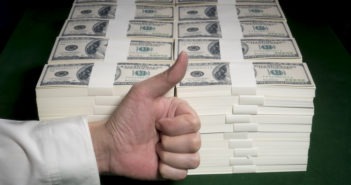The Fed finally did it – cutting rates for the first time in a decade and reversing the highly controversial rate hike of December 2018. Follow the Fed live coverage.
However, the 25 basis point reduction was fully priced in. The bank has been conveying this message for over six weeks and markets speculated about the next moves.
And it seems the Fed’s next moves are not to move.
Recent economic data – from growth, through employment, to consumer confidence – has been upbeat. Fed Chair Jerome Powell may change his mind if the data deteriorate, but for now, even a rate cut in December is in doubt. The world’s most powerful central bank remains data-dependent – and the data is more than satisfactory.
There are three key hawkish developments:
1) Strong employment: The Fed stated that the labor market remains strong – unchanged from the previous statement. Full employment is one of two Fed mandates and some had worried about two weak months of job growth – February and May. These misses seem to belong to the past.
2) Inflation expectations stable: The second Fed mandate has been weaker and was one of the reasons to cut rates now. But while the bank previously said that market-based measures of inflation “have declined”, they now changed their wording to “remain low.” Moreover, they repeat that survey-based measures of inflation are little-changed. It is difficult to see another rate cut without risk to the inflation outlook.
3) Two hawkish dissenters: While Esther George is a known dove, Eric Rosengren is more of a centrist – but also the President of the Boston Fed joined the Kansas Fed President in voting for leaving the rate unchanged. It will be harder for the doves to convince the Federal Open Markets Committee (FOMC) to reduce rates anytime soon.
The recent rise in the US dollar has been reflecting diminishing expectations for further cuts while bond markets lagged behind – expecting another move in September.
And now that bond markets and investors are digesting the news – the US dollar has more room to rise.
What currencies are the most vulnerable to the dollar’s strength? The pound and the euro may be on the receiving end of the greenback flexing its muscles.
Get the 5 most predictable currency pairs
3 reasons why the USD can continue higher after the hawkish Fed cut
